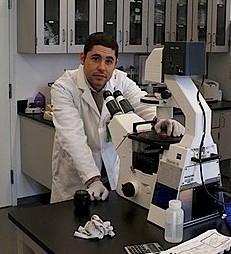Posted by George Shaw on Apr 17, 2012

The gene thought to cause FSHD, Double Homeobox Protein 4 (DUX4), is unusual because it is encoded within each unit (D4Z4) of large arrays present on chromosomes 4 and 10. Normally the arrays are longer than 10 units and do not produce stable DUX4 transcripts. In people with FSHD, one of the chromosome 4 arrays becomes shortened and DUX4 transcripts and protein can be detected from cultured muscle cells and tissue. However, protein and RNA are only present in a small fraction of muscle cells suggesting that additional constraints limit DUX4 production. Here we show that a single D4Z4 unit contains two promoters that initiate transcription in opposite directions and that antisense transcription predominates over transcription in the sense direction, which would produce DUX4. We have identified the 5’ ends of antisense transcripts and demonstrate their presence in human muscle cells. Importantly, the choice of transcriptional direction is dynamic and the balance of sense and antisense transcription is critical for DUX4 production. Thus we demonstrate how array structure of the DUX4 genes is critical for their transcriptional regulation and offer insight into why this arrangement is important for the presence or absence of FSHD pathology.
— Gregory Block
For abstract and paper, see the publication in PLoS one.
See Grant: Mechanism of Wnt Signaling in Facioscapulohumeral Muscular Dystrophy





Connect with us on social media